Crispy, crunchy on the outside, soft and fluffy inside, paniyaram are savory dumplings made using a fermented batter of rice and lentils. It is a popular South Indian dish served as a breakfast or tea-time snack.
In this recipe, I am using dosa batter to make them. This is the perfect way to use up leftover dosa batter. Serve it with your favorite chutney for a comforting meal or snack.
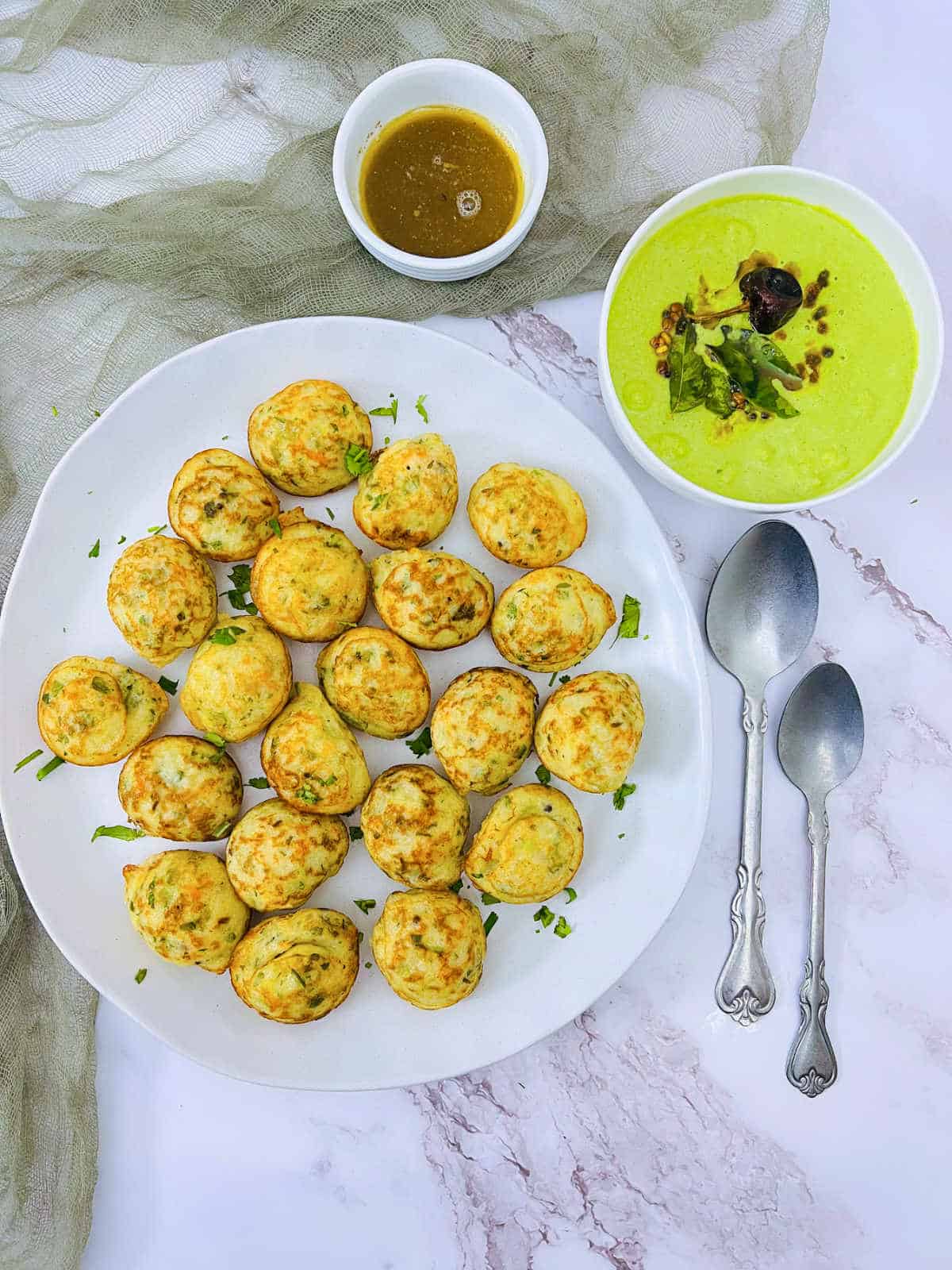
Paniyaram is a popular South Indian dish that is often eaten for breakfast or as a snack. The batter is poured into a special pan with small indentations, called a "paniyaram pan" or "appe pan," which gives the paniyaram its characteristic shape. An appe pan is very similar to aebleskiver pan used to make Danish pancake balls.
I make the paniyaram with my regular dosa batter. The leftover batter after making dosas is just perfect for this dish. Alternatively, you can also use idli batter to make them. Chettinad paniyaram is popular with different names - paddu in Kannada, gunta ponganalu in Telugu, and kuzhi paniyaram in Tamil.
Why you will love this recipe?
- Gluten-free and vegan: This recipe is naturally gluten-free since it uses rice and urad dal as the main ingredients. It is also suitable if you are a vegan.
- Easy to prepare: While fermentation takes time, making the batter and cooking paniyarams is straightforward.
- Delightful texture: Paniyaram has a crispy outer layer and a soft, fluffy inside, making them a delightful texture experience.
What is dosa batter?
Dosa batter is a traditional South Indian fermented batter used to make dosas, which are a type of savory pancake or crepe. Raw rice and urad dal (skinned black lentils) are the main ingredients to make it. These, along with poha (flattened rice or rice flakes), fenugreek seeds (methi seeds), and chana dal (split yellow peas), are washed, soaked, and ground, which is then fermented overnight.
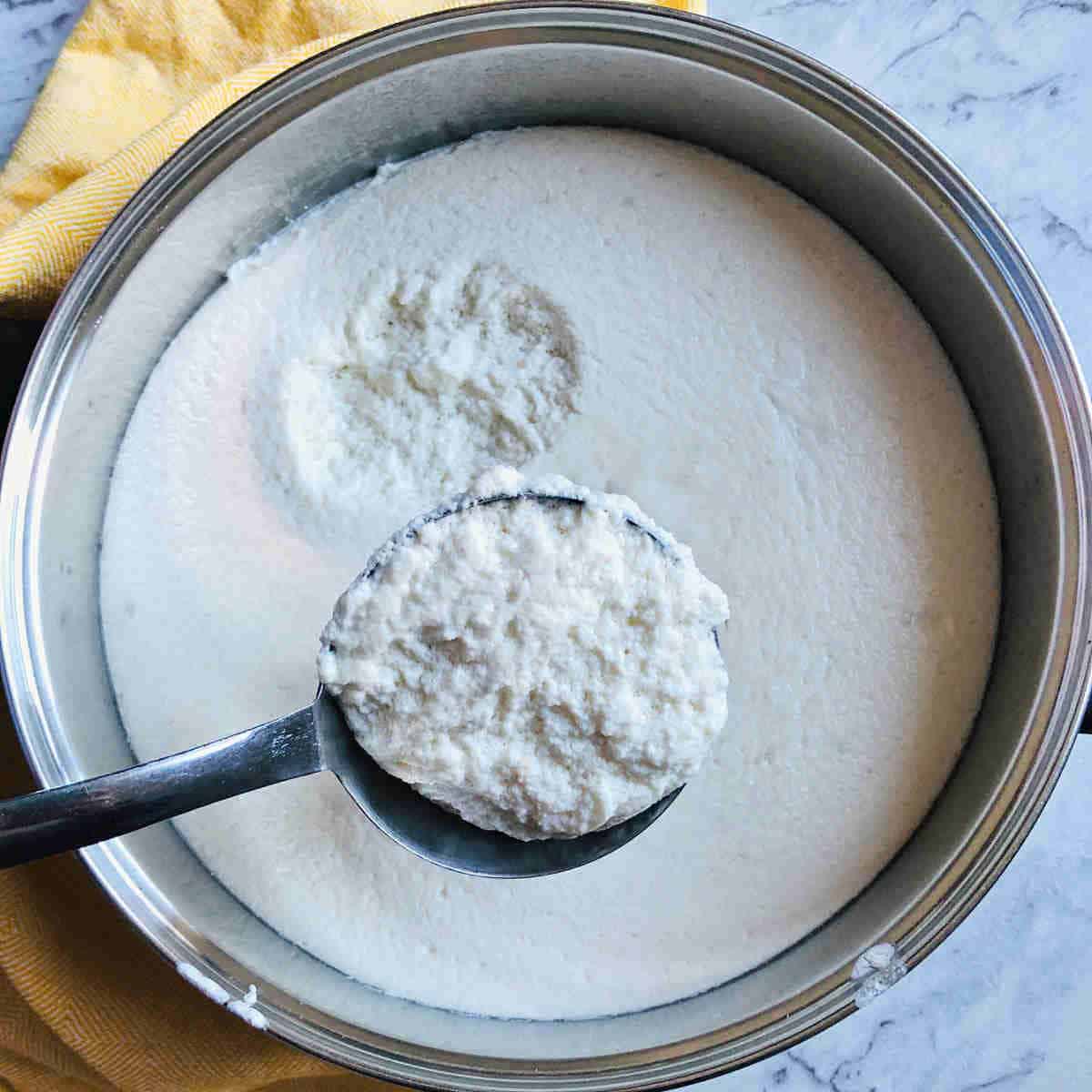
Ingredients
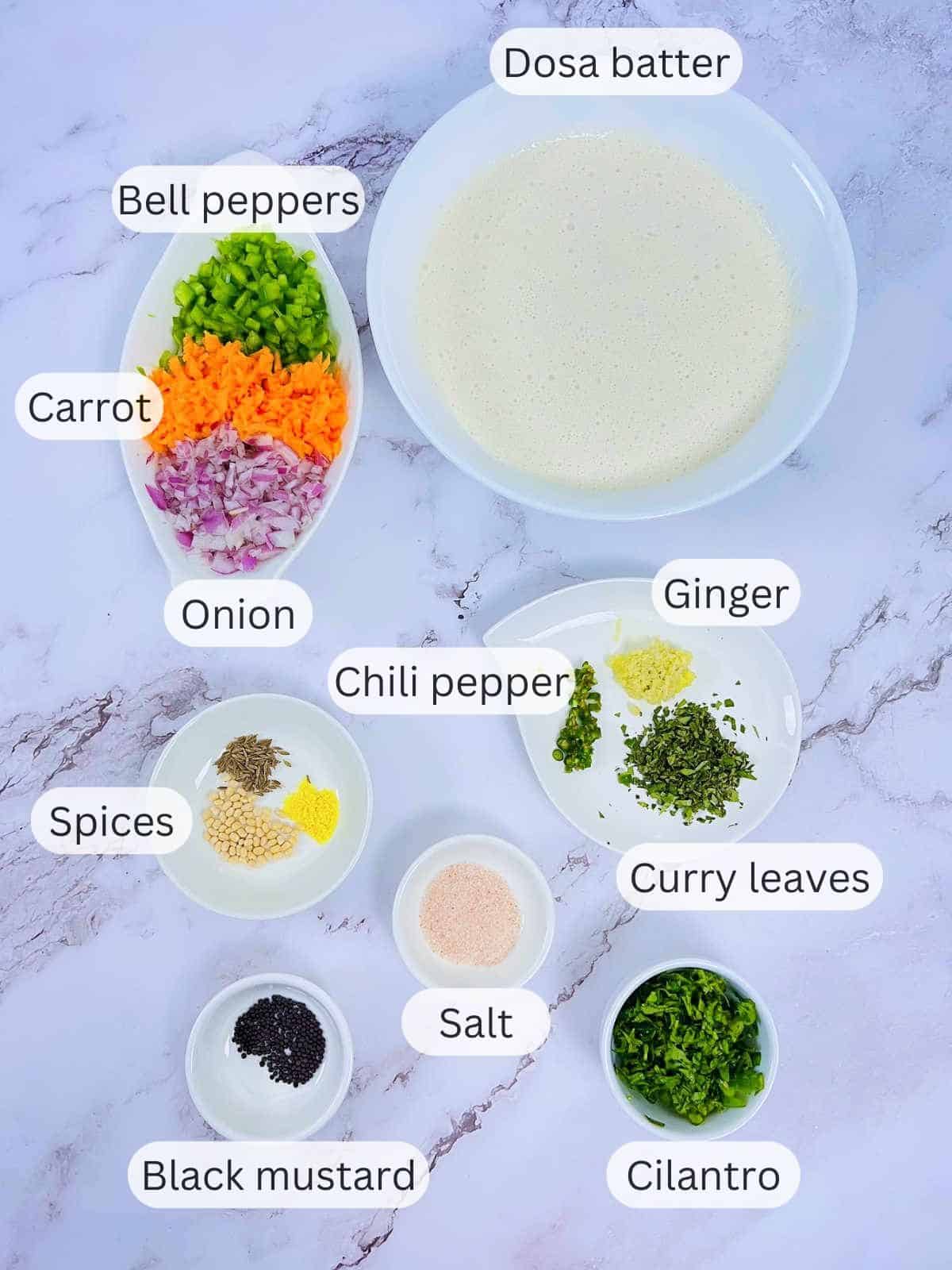
Dosa batter: You can either make dosa batter at home or use store-bought idli-dosa batter.
Veggies: I am using bell peppers, carrots, and onions. It is important to cut them evenly into small pieces.
See the recipe card for full information on ingredients and quantities.
Step-by-step instructions
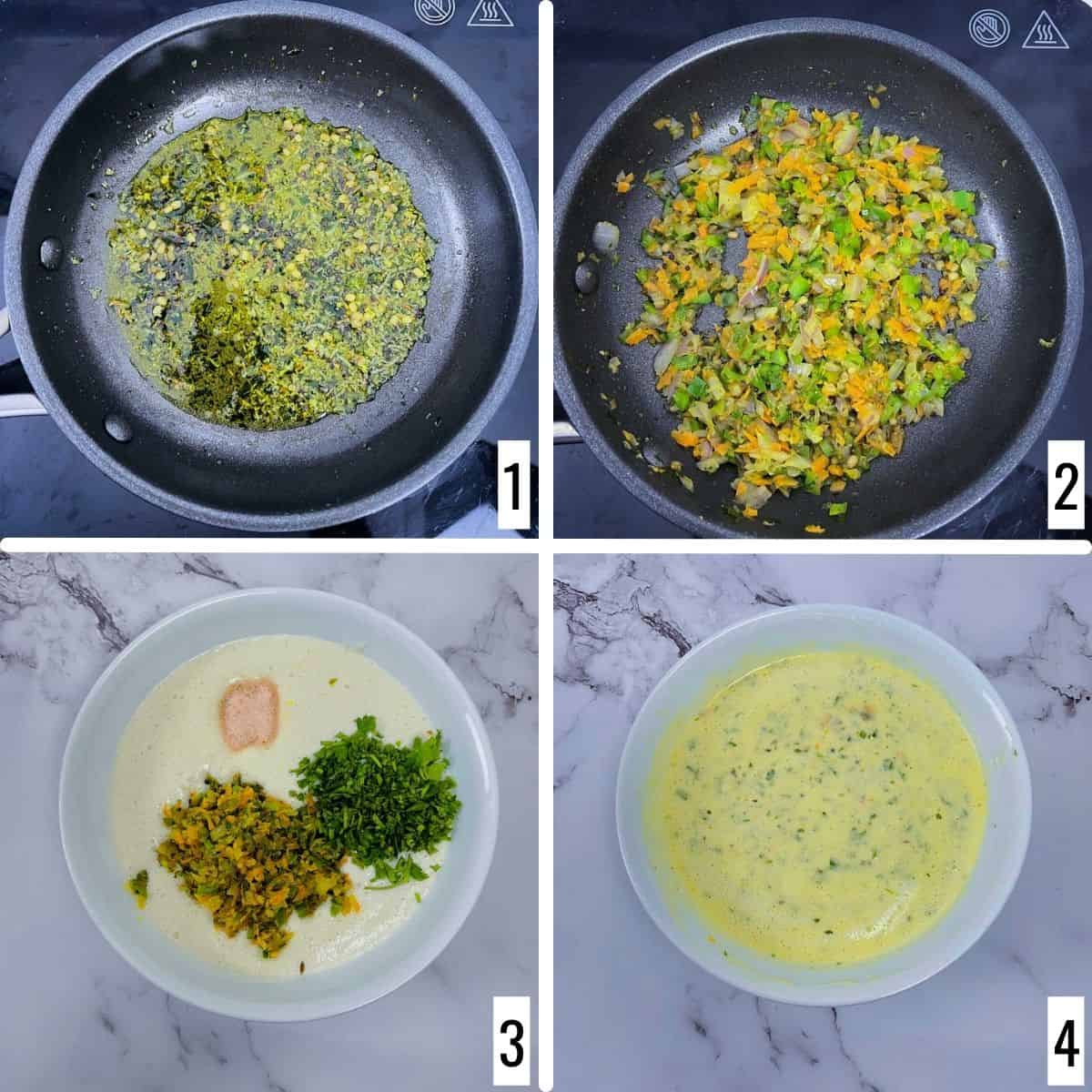
Step 1: Heat one tablespoon of oil in a
Step 2: Next, add the vegetables - onion, carrot, and bell peppers. Mix well and saute for 2-3 minutes or until they begin to soften. Turn off the heat and let the mixture cool down slightly (image 2).
Step 3: Add this tempering to the dosa batter, along with coriander leaves and salt. Mix well (images 3 and 4).
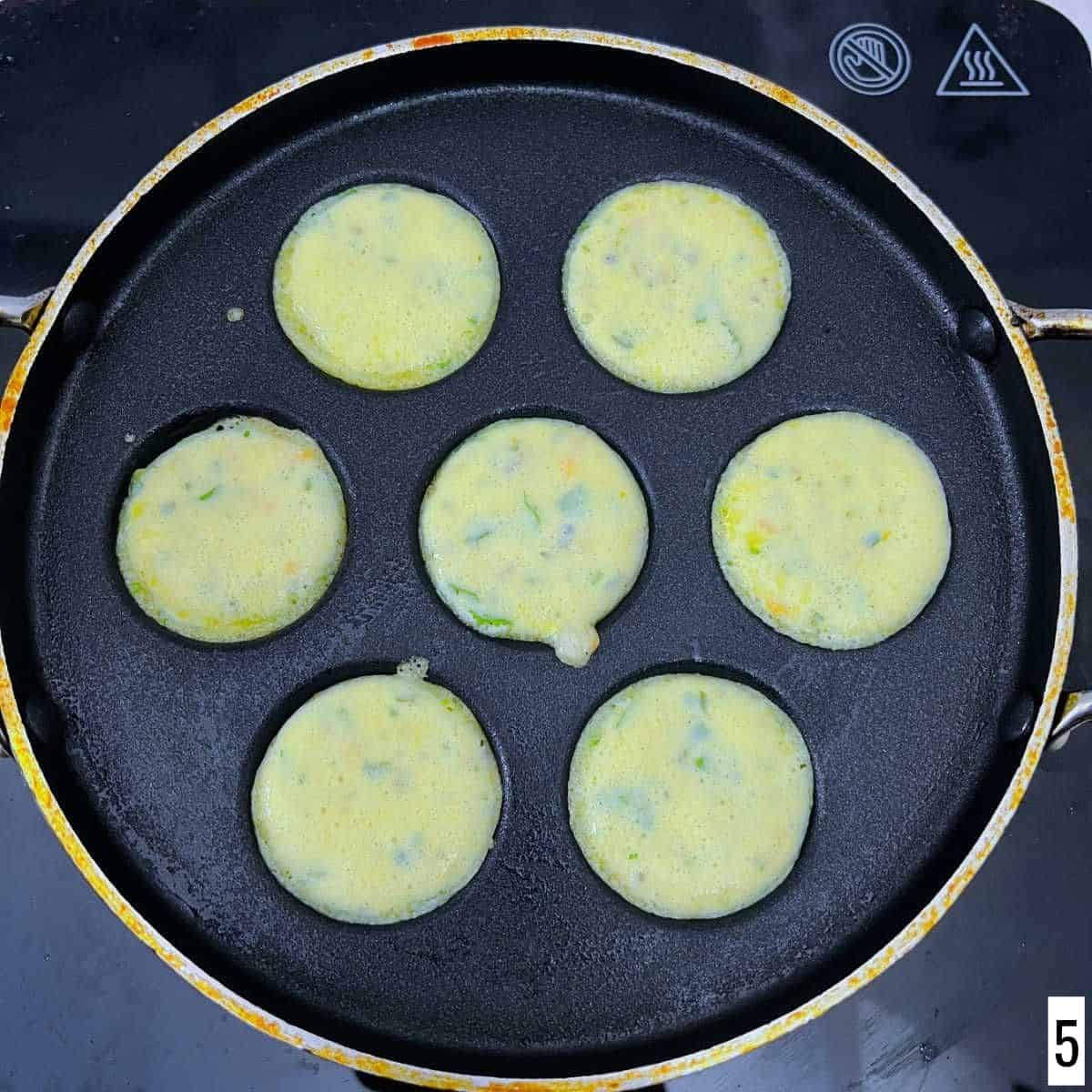
Step 4: Place the paniyaram pan (appe pan) on medium heat. Pour one teaspoon of oil into the appe pan cavities. Pour the batter into each cavity. Let it cook on medium-low heat for 3-4 minutes (image 5).
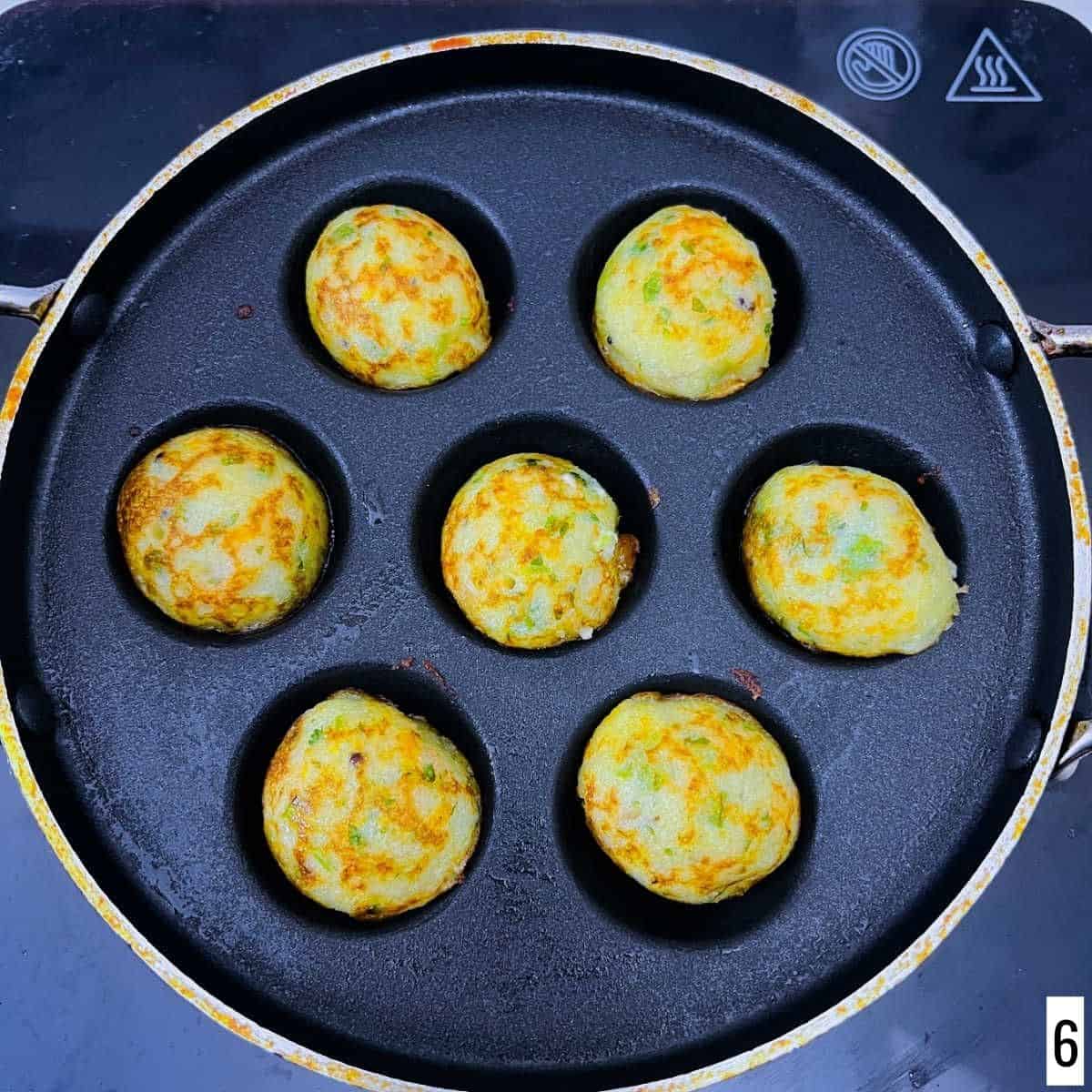
Step 5: Flip and cook on the other side for another 2-3 minutes until they are golden brown. Add a few drops of oil if needed (image 6).
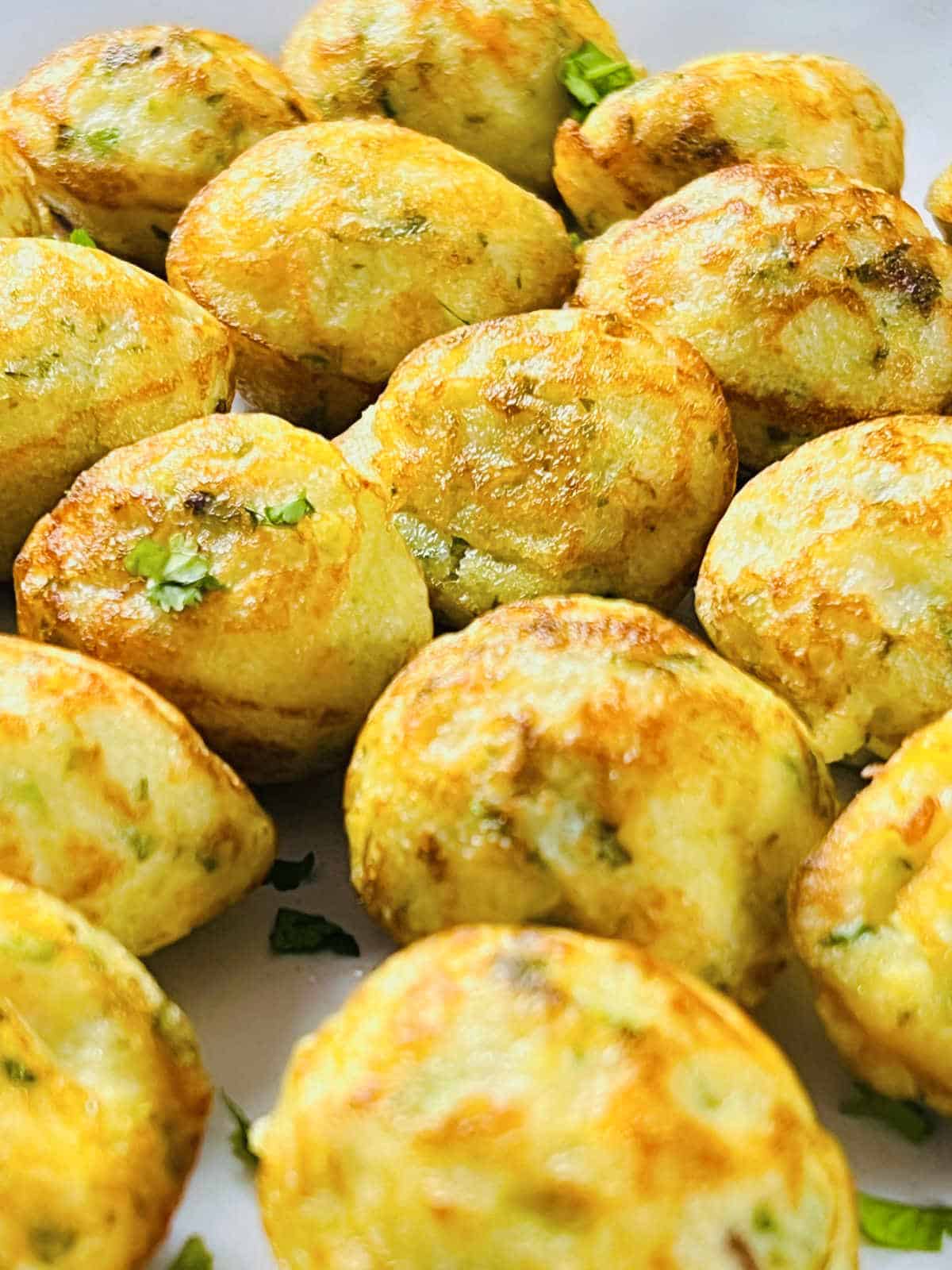
Expert Tips
In this recipe, I have used dosa batter to make the paddu. However, you can use leftover idli batter made using idli rava as well. Make sure the batter has a thick pouring consistency.
Grease the cavities of the appe pan generously with oil before pouring the batter. This prevents the paniyarams from sticking to the pan.
Cook them on low-medium heat and not high heat. This will ensure that they are cooked completely without getting burnt.
Do not cover the appe pan while cooking as this will trap the moisture in the batter, which will make the paniyarams dense. Also, leaving the pan uncovered will give a crispier and crunchier outer layer of the paniyaram while keeping the center soft and airy.
You can use a variety of vegetables in the batter to make the savory paniyaram. Grated cauliflower, broccoli, cabbage, etc., are a great choice. You can also add finely chopped greens like spinach or moringa leaves.
Serving Suggestion
Paniyaram is traditionally served with a variety of flavorful accompaniments, including coconut chutney, tomato chutney, and vegetable sambar (a lentil-based vegetable stew).
You can serve it with any spicy chutney of your choice. It also tastes great with lentil chutney powder (idli podi) and flaxseed chutney powder mixed with some ghee or sesame oil.
Kids love it with a simple side of tangy tomato ketchup and creamy peanut chutney. These condiments complement the paniyaram's taste and texture, making for a delicious and satisfying meal or snack.
Recipe FAQs
Yes, you can use store-bought idli dosa batter as a shortcut to make paniyaram. Just ensure that the batter is well fermented, and you may need to adjust the consistency by adding a little water.
The batter should have a thick pouring consistency, similar to pancake batter. It should flow smoothly but not be too runny.
To store gundpongalu, allow them to cool to room temperature first. Then, place them in an airtight container or a zip-top bag and store them in the refrigerator for up to 3 days. To reheat, you can either microwave them for a short time or gently warm them in a pan with a lid to retain their texture and flavor.
Yes. The batter used to make them is made using rice and lentils, making this dish naturally gluten-free.
You can add a variety of vegetables to paniyaram for extra flavor and nutrition. Common options include chopped onions, green chilies, bell peppers, carrots, spinach, corn, peas, cabbage, tomatoes, and even mushrooms. Finely chop or grate the vegetables and saute them before mixing them into the batter for a delicious and colorful dish.
To make a sweet version, start with the regular idli/dosa batter (make sure it does not have salt added). Add jaggery (grated or melted), cardamom powder, and grated coconut. Mix these sweet ingredients into the batter, adjust the sweetness to your taste, and then cook the paniyarams as you would with the regular batter. The result is sweet and delightful paniyarams, perfect for a dessert or snack.
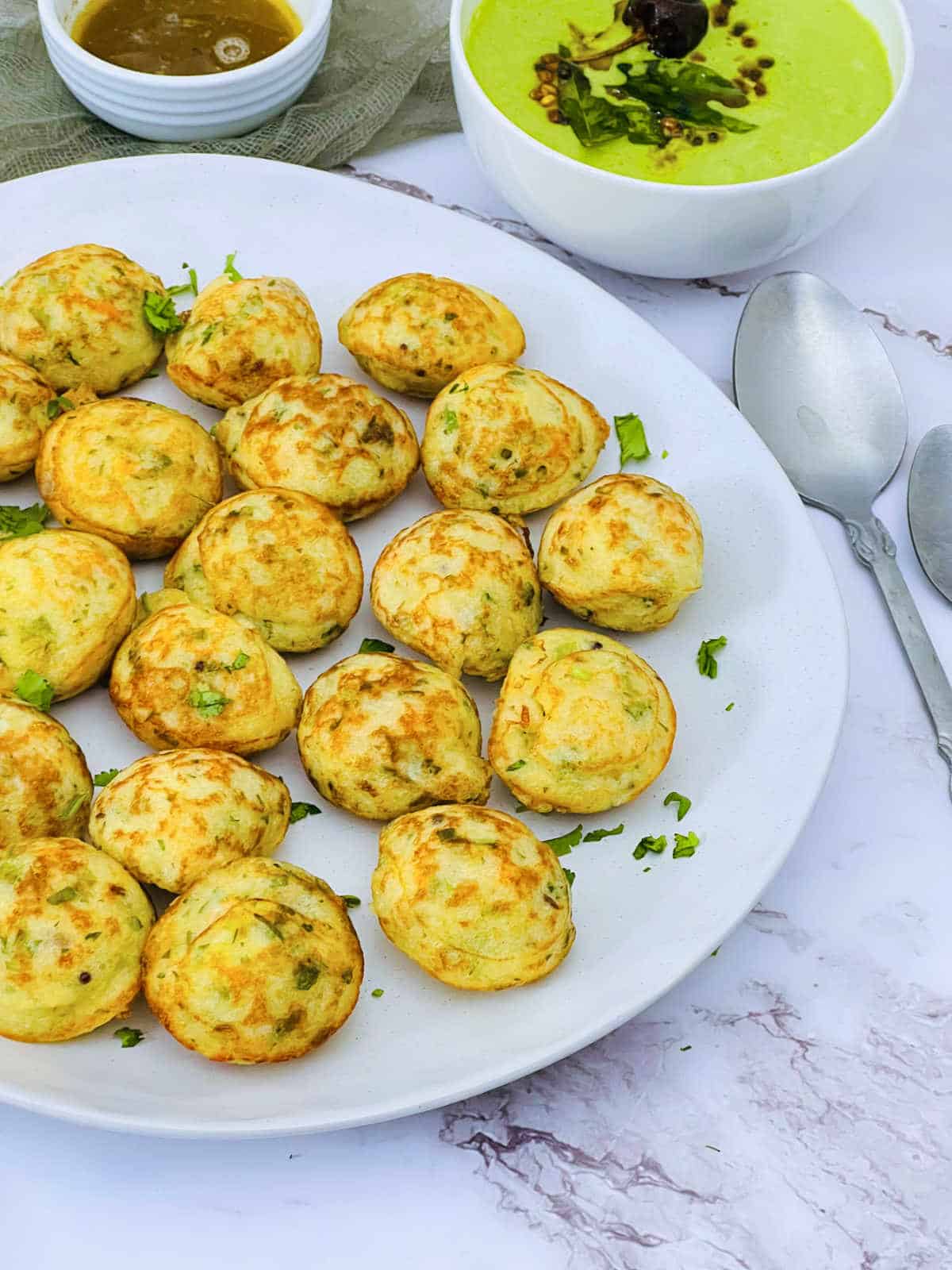
More traditional South Indian breakfast recipes
If you tried this Paniyaram Recipe or any other recipe on my website, please leave a ? star rating and let me know how it went in the ? comments below.
Recipe card
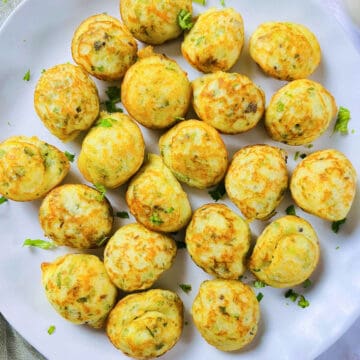
Vegetable Paniyaram
Equipment
- Paniyaram pan (also called appe pan)
Ingredients
- 2 cups dosa batter
- 1 small onion (finely chopped)
- ½ bell pepper (finely chopped)
- 1 small carrot (peeled and grated)
- 1 tablespoon oil (plus extra to make the paniyaram)
- 1 teaspoon ginger (minced)
- 1-2 green chili (finely chopped), adjust as per taste
- 1 sprig curry leaves (finely chopped)
- ¼ cup cilantro (finely chopped)
- ¾-1 teaspoon salt (adjust as per taste)
Spices:
- 1 teaspoon mustard seeds
- ½ teaspoon cumin seeds
- 1 teaspoon urad dal (optional)
- ½ teaspoon asafoetida (hing)
Instructions
- Remove the dosa batter from the refrigerator and let it sit on the counter for at least 15-20 minutes.
- Finely chop the onion and bell pepper. Peel and grate the carrot. Peel and mince the ginger, and finely chop the chili pepper and curry leaves.
Make the tempering and batter:
- Take a frying pan and heat the oil. Add the mustard seeds and let them splutter. Next, add cumin seeds, urad dal, and hing.
- Add ginger, green chili, and curry leaves. Saute for about a minute.
- Next, add the vegetables - onion, carrot, and bell peppers. Mix well and saute for 2-3 minutes or until they begin to soften.
- Turn off the heat and let the mixture cool down slightly.
- Add this tempering to the dosa batter, along with cilantro and salt. Mix well.
Make the paniyaram:
- Place the paniyaram pan (appe pan) on medium heat. Pour a small amount of oil into the appe pan cavities.
- Pour the batter into each cavity. Let it cook on medium-low heat for 3-4 minutes. Flip and cook on the other side for another 2-3 minutes. Do not cover when cooking.
- Serve hot with chutney.
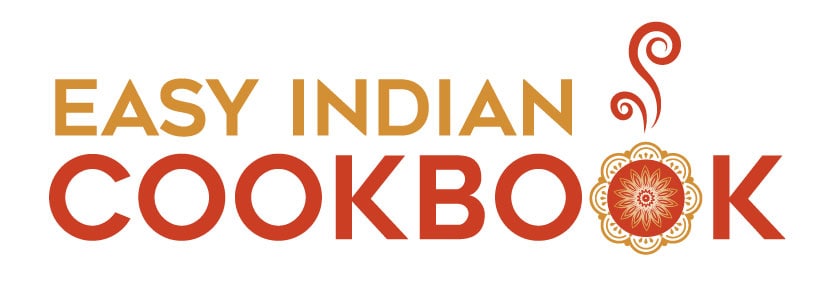
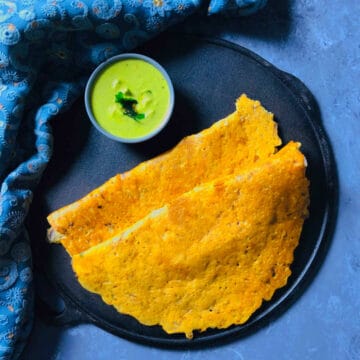
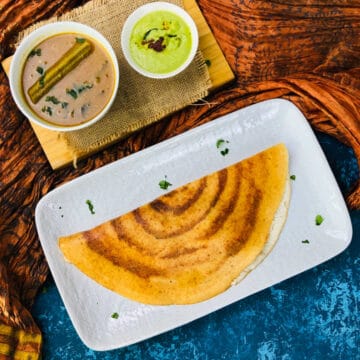
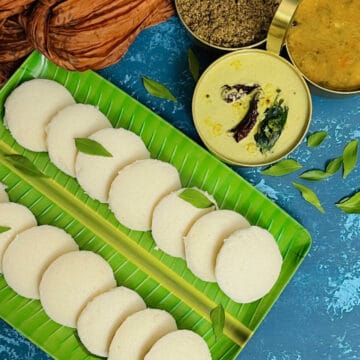
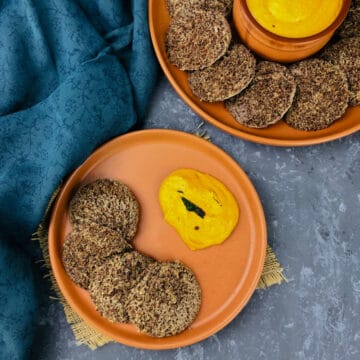
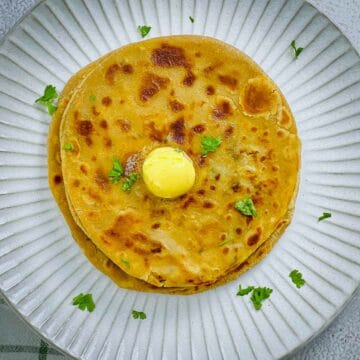
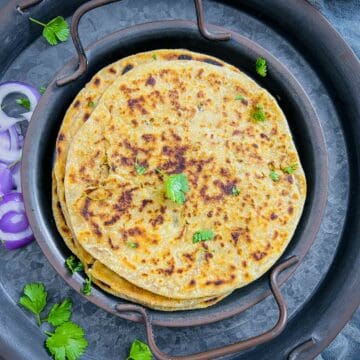
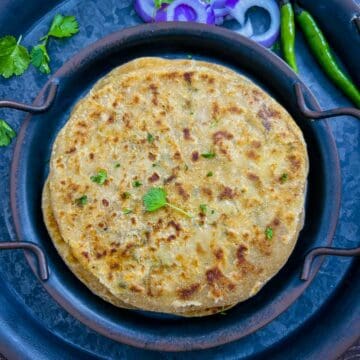
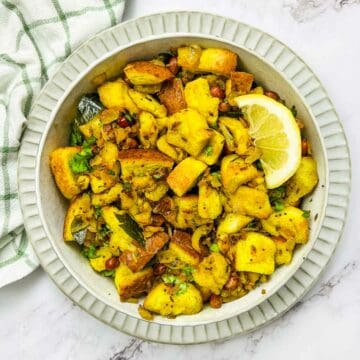
Comments
No Comments